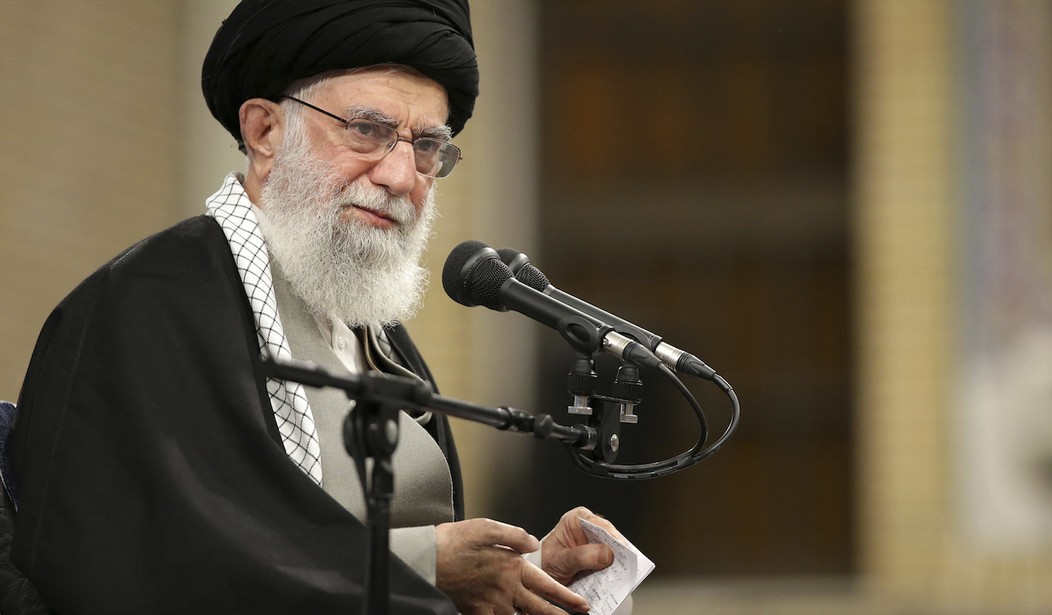The huge proxy forces that the Iranian regime has built up around the Middle East pose a direct menace to Israel. As Iran threatens to respond to the suspected Israeli assassination of Hamas leader Ismail Haniyeh in Tehran, the regional militias that the Islamic Republic has armed for decades could play a major role in any attack. US Secretary of State Antony Blinken has made his tenth visit to the Middle East in a bid to broker an end to the Israel-Hamas war in Gaza. Blinken met with Israel’s President Isaac Herzog and Prime Minister Binyamin Netanyahu, describing his peace bid as “probably the best, maybe the last, opportunity to get the hostages home, to get a cease-fire and to put everyone on a better path to enduring peace and security.” Negotiations for a ceasefire will continue in Cairo. Western nations are alarmed at the possibility of a deepening conflict that could draw in Iran’s allies like Russia, triggering a combined US, EU and UK response to defend Israel.
The Iranian regime has financed, armed and trained militias in Syria, Yemen, Iraq, Lebanon and Gaza since the 1979 revolution that brought them to power. The theocratic regime’s eight-year war with Iraq in the 1980s destroyed most of Iran’s arsenal, largely comprised of modern weaponry and equipment that the Americans had supplied to Shah Mohammad Reza Pahlavi. Since then, the mullahs have raced to develop a nuclear weapon, using the deeply flawed Joint Comprehensive Plan of Action (JCPOA) nuclear deal to dupe the West into believing they had abandoned the project. Following President Trump’s unilateral withdrawal from the deal in 2018, the mullahs’ enrichment of uranium has reached almost weapons-grade purity, with a senior congressional intelligence committee chairman predicting last week that Iran could declare itself a nuclear weapons state "by the end of the year."
While accelerating the development of its own missile program, Iran continues to rely on its proxy militias as an asymmetric threat to maintain pressure on both Israel and the United States. The arming of militant groups began in the 1980s with the formation of Hezbollah as a major Shi’ia force, fighting Israel in Lebanon. Hezbollah’s forces number as many as 25,000 full-time fighters, with additional tens of thousands in reserves, according to an Israeli military assessment. It is also believed that Hezbollah has an arsenal of 150,000 rockets and missiles, including precision-guided missiles. The group was blamed for the suicide bombing in 1983 in Beirut that killed 241 American servicemen.
Recommended
After the 2003 US-led invasion of Iraq that toppled Saddam Hussein, the Iranians expanded their program by arming a wide range of Shi’ia militias in Iraq, gradually moulding them into a unified structure known as the Popular Mobilization Forces (PMF), trained and controlled
The Iranian regime, aided and abetted by Hezbollah, has also been a strong backer of President Bashar al-Assad in Syria, spending billions of dollars propping up his long and bloody civil war which has accounted for more than 600,000 deaths. Syria is a majority Sunni country, but under Assad’s dictatorship, has been governed by a Shi’ia minority. While it views itself as the world’s key defender of Shi’ia Muslims, the mullahs have even on occasion used the IRGC to arm and train Sunni militant groups, where their main target was Israel or America.
Palestinian militant forces like Hamas and Islamic Jihad have received weaponry and other materiel from Iran for decades. It is widely accepted that Iran was behind the Oct. 7 Hamas attack, when militants killed 1,200 Israelis and took 250 others hostage, causing the war in Gaza. Iran’s so-called “Axis of Resistance” also includes the Houthi rebels in Yemen. The Houthis have held Yemen’s capital, Sanaa, since 2014, as part of that country’s ruinous civil war. They follow the Shi’ia Zaidi faith, a branch of Shi’ia Islam that is almost exclusively found in Yemen. The Houthis have been supplied with kamikaze drones and missiles by Iran, with IRGC trainers developing their attack skills, heavily deployed in deadly assaults on commercial shipping in the Red Sea and Gulf of Aden, seriously disrupting world trade. Claiming to defend their Palestinian brothers, the Houthis have launched missile attacks on Israel itself. They claim that their aggressive tactics have attracted more than 200,000 additional fighters to join their ranks. Meanwhile, the US Navy’s efforts at stopping the attacks on shipping have led to the most intense continuous combat for its sailors since World War II but has yet failed to end the assaults.
Western nations need to undertake a stark re-evaluation of policy in dealing with Iran. Decades of appeasement has demonstrably failed. The West’s strategy of engagement, dialogue, and concessions has not only failed to bring about positive change but has actually encouraged the Iranian regime to continue its repressive and aggressive actions. The mullahs' regime forms a critical pillar of the Russia-North Korea-Venezuela-Iran axis of global destabilization. They regard the West as their arch enemy and the West must, in turn, wake up to the fact that the head of the snake is in Tehran. Backing the Iranian people in their quest to overthrow the mullahs and establish a democracy in Iran would significantly weaken this ‘Axis of Resistance’ alliance, leading to a substantial and beneficial realignment of the international order, enhancing global stability and security. Transforming Iran from a terrorist tyranny into a stable and functioning democracy would strike at the heart of this alliance, dramatically reducing its ability to sow discord. Such a transformation would not merely dismantle one of the most perilous networks of global instability but would also trigger a profound and positive shift in the international landscape. This change would pave the way for a more secure and peaceful global order, marking a decisive turn in the fight against international destabilization efforts.

























Join the conversation as a VIP Member